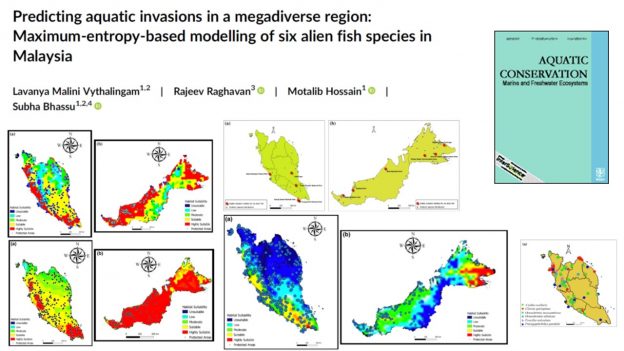The Search For Non-Xenomorph Life: Predicting Alien Species On Earth

Table of Contents
Understanding Extremophiles: Clues from Earth's Harsh Environments
The search for extraterrestrial life often focuses on finding environments similar to Earth's, but what about places vastly different? This is where extremophiles come in.
What are Extremophiles?
Extremophiles are organisms that thrive in extreme environments – conditions that would be lethal to most known life forms. These include:
- Thermophiles: Organisms that live in extremely hot environments, such as hydrothermal vents.
- Halophiles: Organisms that thrive in highly saline (salty) environments, like the Great Salt Lake.
- Acidophiles: Organisms that live in extremely acidic environments, such as acid mine drainage.
Extremophile Adaptations
These organisms possess unique adaptations that enable them to survive these harsh conditions. These include:
- Specialized enzymes that function optimally at extreme temperatures, pH levels, or salinity.
- Protective cell walls that prevent damage from extreme conditions.
- Unique metabolic pathways that allow them to utilize unusual energy sources.
Bullet Points:
- Examples: Thermus aquaticus (thermophile used in PCR), Halobacterium salinarum (halophile), Acidithiobacillus ferrooxidans (acidophile).
- Implications: The existence of extremophiles suggests that life can flourish in environments far more diverse than previously imagined, increasing the possibility of finding life on planets with extreme conditions like those found on Europa or Enceladus.
- Potential characteristics of non-xenomorph life: Extremophiles suggest alien life could possess unusual metabolisms, unique biochemistries, and adaptations to extreme temperatures, pressures, or radiation levels. They might not resemble anything we've ever seen.
Biosignatures: Searching for Signs of Life Beyond Earth
Beyond directly observing alien life, we can search for evidence of its existence through biosignatures.
Defining Biosignatures
Biosignatures are chemical compounds, isotopic ratios, or physical structures that indicate the presence of past or present life. Examples include:
- Atmospheric gases: Unusual ratios of gases like methane, oxygen, or carbon dioxide could indicate biological activity.
- Isotopic ratios: Specific ratios of isotopes (different forms of an element) can provide clues about biological processes.
- Unique organic molecules: The detection of complex organic molecules, such as amino acids or nucleotides, could suggest the presence of life.
Challenges in Detecting Biosignatures
Distinguishing between biogenic (produced by life) and abiogenic (produced by non-biological processes) signals is a major challenge. False positives are possible.
Bullet Points:
- Examples: The detection of methane on Mars is currently being investigated as a possible biosignature, though geological processes could also produce it.
- Role of technology: Advanced telescopes like the James Webb Space Telescope and future space missions will play a crucial role in the search for biosignatures.
- Future technologies: New techniques, such as advanced spectroscopy and artificial intelligence, are being developed to improve the detection and interpretation of biosignatures.
The Role of Astrobiology in Predicting Non-Xenomorph Life
Astrobiology, the study of life's origin, evolution, distribution, and future in the universe, is crucial in this quest.
Astrobiology's Interdisciplinary Nature
Astrobiology integrates various scientific fields:
- Biology: Understanding the fundamental principles of life on Earth.
- Chemistry: Studying the chemical processes that underlie life.
- Geology: Analyzing planetary surfaces and subsurface environments.
- Physics and Astronomy: Understanding the formation and evolution of planetary systems and stars.
Modeling Alien Ecosystems
Scientists use computational models to predict the potential for life on other planets based on different environmental conditions. These models consider factors like:
- Temperature
- Pressure
- Atmospheric composition
- Availability of water and nutrients
Bullet Points:
- Examples: Models predicting the habitability of subsurface oceans on icy moons like Europa.
- Diverse environments: Consideration of diverse environments, including those with different solvent systems (e.g., liquid methane) or those exposed to high radiation levels.
- Limitations: Current models are limited by our current understanding of life and the diversity of environments where it might exist. We may need to drastically revise our understanding.
Beyond the Xenomorph: Reimagining Alien Life Forms
Science fiction often limits our imaginations with stereotypical alien portrayals.
Challenging Sci-Fi Tropes
The Xenomorph, with its human-like intelligence and parasitic nature, is a common trope, but it doesn't reflect the potential diversity of extraterrestrial life.
Considering Alternative Morphologies and Physiologies
- Silicon-based life: Silicon, similar to carbon, could form the basis of complex molecules.
- Different atmospheric pressures: Organisms adapted to extremely high or low atmospheric pressures.
- Radically different metabolisms: Life forms using energy sources other than sunlight or chemical reactions known on Earth.
Bullet Points:
- Examples: Scientists have proposed organisms with different numbers of limbs, radically different sensory systems, or even life forms existing as diffuse colonies.
- Importance of open-mindedness: We need to be open to the possibility of life forms vastly different from anything on Earth.
- Encouraging speculation: Creative yet scientifically grounded speculation is crucial in driving the search for new possibilities.
Conclusion
Predicting non-xenomorph life requires studying extremophiles on Earth to understand life's resilience, developing advanced techniques to detect biosignatures, and applying the interdisciplinary approach of astrobiology. The potential for diverse extraterrestrial life is immense, but our current understanding is limited. We need continued research and innovative thinking to fully comprehend the possibilities. The search for life beyond Earth is an exciting journey, filled with the promise of uncovering life forms beyond our wildest imaginations. Learn more about astrobiology and the search for extraterrestrial life at [link to NASA Astrobiology website] and [link to another relevant resource]. Let's continue the quest for non-xenomorph life!

Featured Posts
-
 Guccis New Shanghai Exhibition A Closer Look
May 27, 2025
Guccis New Shanghai Exhibition A Closer Look
May 27, 2025 -
 Ataque A Policiais Bandidos Rompem Cerco E Abrem Fogo
May 27, 2025
Ataque A Policiais Bandidos Rompem Cerco E Abrem Fogo
May 27, 2025 -
 Chelsea And Osimhen Transfer Update And Latest News
May 27, 2025
Chelsea And Osimhen Transfer Update And Latest News
May 27, 2025 -
 Orange Crush 2025 How Organizers Brought Back The Hbcu Spring Break Celebration To Tybee Island
May 27, 2025
Orange Crush 2025 How Organizers Brought Back The Hbcu Spring Break Celebration To Tybee Island
May 27, 2025 -
 Fruehjahrskonzert Des Musikvereins Viehdorf Einladung
May 27, 2025
Fruehjahrskonzert Des Musikvereins Viehdorf Einladung
May 27, 2025
